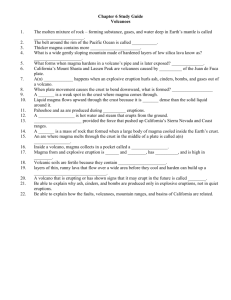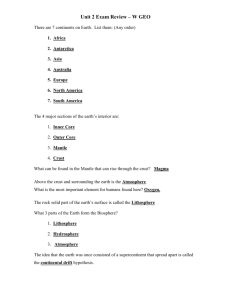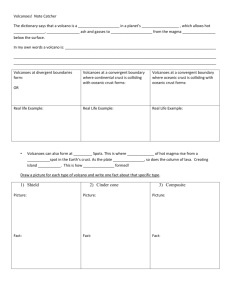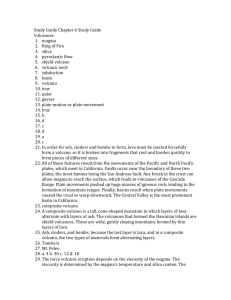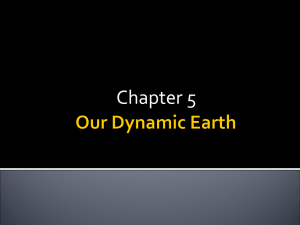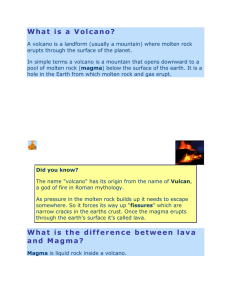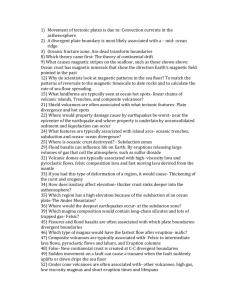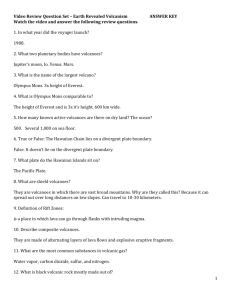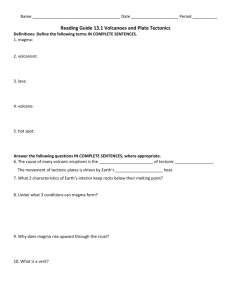Volcanoes Guided Reading Key
advertisement
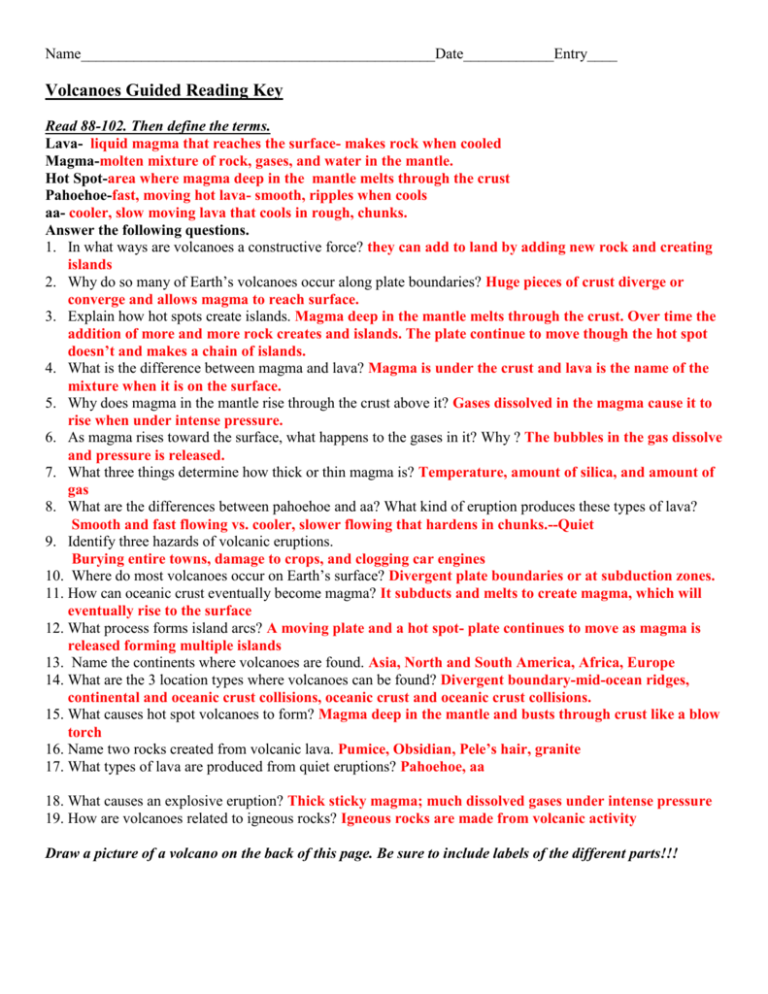
Name_______________________________________________Date____________Entry____ Volcanoes Guided Reading Key Read 88-102. Then define the terms. Lava- liquid magma that reaches the surface- makes rock when cooled Magma-molten mixture of rock, gases, and water in the mantle. Hot Spot-area where magma deep in the mantle melts through the crust Pahoehoe-fast, moving hot lava- smooth, ripples when cools aa- cooler, slow moving lava that cools in rough, chunks. Answer the following questions. 1. In what ways are volcanoes a constructive force? they can add to land by adding new rock and creating islands 2. Why do so many of Earth’s volcanoes occur along plate boundaries? Huge pieces of crust diverge or converge and allows magma to reach surface. 3. Explain how hot spots create islands. Magma deep in the mantle melts through the crust. Over time the addition of more and more rock creates and islands. The plate continue to move though the hot spot doesn’t and makes a chain of islands. 4. What is the difference between magma and lava? Magma is under the crust and lava is the name of the mixture when it is on the surface. 5. Why does magma in the mantle rise through the crust above it? Gases dissolved in the magma cause it to rise when under intense pressure. 6. As magma rises toward the surface, what happens to the gases in it? Why ? The bubbles in the gas dissolve and pressure is released. 7. What three things determine how thick or thin magma is? Temperature, amount of silica, and amount of gas 8. What are the differences between pahoehoe and aa? What kind of eruption produces these types of lava? Smooth and fast flowing vs. cooler, slower flowing that hardens in chunks.--Quiet 9. Identify three hazards of volcanic eruptions. Burying entire towns, damage to crops, and clogging car engines 10. Where do most volcanoes occur on Earth’s surface? Divergent plate boundaries or at subduction zones. 11. How can oceanic crust eventually become magma? It subducts and melts to create magma, which will eventually rise to the surface 12. What process forms island arcs? A moving plate and a hot spot- plate continues to move as magma is released forming multiple islands 13. Name the continents where volcanoes are found. Asia, North and South America, Africa, Europe 14. What are the 3 location types where volcanoes can be found? Divergent boundary-mid-ocean ridges, continental and oceanic crust collisions, oceanic crust and oceanic crust collisions. 15. What causes hot spot volcanoes to form? Magma deep in the mantle and busts through crust like a blow torch 16. Name two rocks created from volcanic lava. Pumice, Obsidian, Pele’s hair, granite 17. What types of lava are produced from quiet eruptions? Pahoehoe, aa 18. What causes an explosive eruption? Thick sticky magma; much dissolved gases under intense pressure 19. How are volcanoes related to igneous rocks? Igneous rocks are made from volcanic activity Draw a picture of a volcano on the back of this page. Be sure to include labels of the different parts!!!
